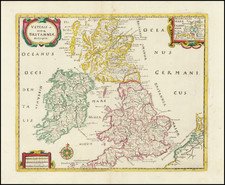Fantastic large chart of Ireland and St. George's Channel and the west coast of Britain. The cartography is based on surveying by Joseph Huddart, who died in the year the chart was published, and it was produced by Laurie & Whittle in London in 1816.
Huddart produced manuscript surveys of this region from at least the 1770s.
The chart includes many soundings and a few coastal profiles. There are five inset maps:
- The Frith of Clyde
- The Harbour of Liverpool, reduced, by permission, from the Surveys of Lieut. Thos. Evans, RN.
- [Bristol Channel] (Continuation on the same scale.)
- Cork Harbour. (From Whittle and Laurie's Harbours of the English Channel, &c.)
- Dublin Bay.
Aitkins Rock
The chart features a potential location for Aitkins Rock with the note "nearly even with the surface of the water. - Its true Longitude has not yet been determined."
Aitkins Rock is a mysterious and elusive rock said to be located off the northwest coast of Ireland in the Atlantic Ocean. It has been the subject of much apprehension and inquiry, with various accounts placing it between the latitudes of 55° to 55° 18′ N and longitudes 9° 38′ to 14° W. Despite numerous attempts to locate it, including detailed expeditions by the British Royal Navy in the early 19th century, Aitkins Rock has never been conclusively found. These efforts included careful searches and sweeping the suspected area with long lines of hawsers between ships, yet the rock, if it exists, remains a maritime enigma.
Disappearing rocks or islands have been reported off the west coast of Ireland for centuries. Perhaps the most famous of which was Hy Brasil.
Richard Holmes Laurie (1777-1858) was the son of mezzotint engraver Robert Laurie, who had taken over Robert Sayer's publishing house with James Whittle in 1794. Richard Holmes Laurie joined in a partnership with Whittle when his father retired in 1812. The name of the firm then switched from Laurie & Whittle to Whittle & Laurie. Whittle died in 1818, leaving Richard Holmes to continue publishing alone as R. H. Laurie.
When the Hydrographic Office opened in 1795, it was tasked with creating and producing all the nautical charts for the Royal Navy so as to wean the Navy off dependence on foreign charts. By the 1820s, private publishers were augmenting HO charts and competing with them, including Richard Holmes Laurie. Richard gave up publishing anything except nautical materials by 1830. He also sold charts to Trinity House, the lighthouse and maritime safety fraternity. He died in 1858.
The firm continued to print under the name R.H. Laurie even after 1858. Later, the firm was managed by Laurie’s draughtsman, Alexander George Findlay, and, later, Daniel and William Kettle.
James Whittle (1757-1818) was a British engraver and map printer. Whittle was employed by Robert Sayer (ca. 1725-1794). Together with Robert Laurie (1755?-1836), he took on Sayer’s business when the older man died in 1794. The two traded together as Laurie & Whittle until 1812, when Laurie retired. They had specialized in sea charts and maritime atlases. Whittle then partnered with Laurie’s son, Richard Holmes Laurie, until he died in 1818.
Joseph Huddart (1741–1816) was a distinguished British hydrographer, engineer, and inventor known for his significant contributions to the fields of coastal surveying and rope manufacturing. Born in Allonby, Cumberland, Huddart displayed a natural talent for mathematics and mechanics from a young age, constructing models of mills and ships based on descriptions he read. Following his father's death in 1762, he took over the family's fish-curing business and began to explore the world of navigation and surveying, commanding a brig trading to Ireland and the West Indies.
Huddart's skills and innovations caught the attention of influential figures, leading to his service with the East India Company. Here, he made four voyages to the East as the commander of the ship Royal Admiral, during which he surveyed the coasts of India and Sumatra, as well as St. George's Channel. His maritime career also included surveying among the Hebrides. In 1791, his contributions to science and navigation were recognized with his election as a Fellow of the Royal Society (FRS) and his appointment as an elder brother of Trinity House, where he oversaw lighthouse construction and navigation improvements.
Apart from his surveying work, Huddart made a fortune from inventing a method for improving the manufacture of rope. This method evenly distributed stress across the fibers, enhancing the strength and reliability of the ropes. He utilized steam power to automate production, establishing Huddart & Co. in Limehouse for this purpose. His invention significantly impacted the maritime industry, leading to his wealth and enabling him to purchase estates in Wales.
Joseph Huddart died in London in 1816 and was buried in a vault under St. Martin's-in-the-Fields. He left behind a legacy of innovation in both hydrography and rope manufacturing, contributing to the safety and efficiency of maritime navigation and industry.











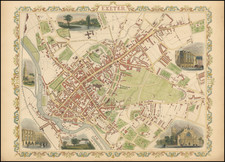
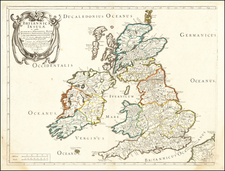
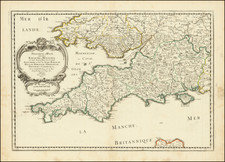
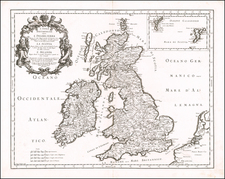
![[ British Islands ] Wight / Scilly / Jersey / Guernsey / Alderney / Man / Holy / Farne ] The Smaller Islands in the British Ocean](https://storage.googleapis.com/raremaps/img/small/98973.jpg)
